19-year-old Emmanuel Mudiay enters the 2015 NBA draft as a mystery man to many around the NBA. Possessing a résumé that only encompasses 12 contests worth of non-high school scouting data, and owning a wealth of physical potential and skills, Mudiay is perhaps the biggest risk versus reward player in this year’s draft. While he is almost assuredly going to be a top five pick come June, his selection certainly comes with some risk attached to it. Mudiay is currently ranked as the No. 4 overall prospect in this year’s draft by both Chad Ford of ESPN.com (Insider subscription required) and Jonathan Givony of DraftExpress.
Mudiay eschewed an opportunity to play college ball for coach Larry Brown at Southern Methodist University during the 2014/15 campaign, and instead signed a one-year, $1.2MM agreement with Guangdong of the Chinese Basketball Association. It remains to be seen if the non-traditional path Mudiay has taken will pay off for him in the long run, and if the lack of competing against NCAA players this past season will hurt his short-term development.
An ankle injury that Mudiay suffered back in November cut his season short, depriving him of some needed growth opportunities on the court. But as a testament to his talent and ability, Mudiay did return to the hardwood during the playoffs, and despite not competing in any games for over three months, the 19-year-old scored 17 points in the first half and finished with a total of 24 points, eight rebounds, four assists, and two steals in his first game back in action. It is that kind of difference-maker ability that has numerous NBA teams intrigued by Mudiay’s potential as a player.
His numbers overseas were solid in an admittedly miniscule sample size, averaging 18.0 points, 6.3 rebounds, 5.9 assists, and 1.6 steals in 31.5 minutes per contest. Mudiay’s shooting percentages were .478/.342/.574. ESPN’s Kevin Pelton projects those numbers to translate to 11.6 points, 5.5 rebounds and 5.2 assists per 36 minutes in the NBA, which compare favorably to Celtics rookie Marcus Smart, who averaged 10.5 points, 4.9 assists and 4.4 rebounds per 36 minutes this past season.
Mudiay’s decision to skip the draft combine didn’t sit well with many NBA scouts since that venue would have been the first opportunity for many around the league to see him perform live, Ford writes. His absence at that showcase has impacted his draft stock a bit, with more than one GM asking how they could be expected to rank Mudiay higher than Ohio State’s D’Angelo Russell, when Russell has done more to prove himself worthy of being a top three pick, the ESPN scribe relays. The young guard is not without his supporters, and a number of scouts have him ranked as the second best player in the draft behind Karl-Anthony Towns. One such scout told Ford, “Mudiay was regarded by everyone as a much better prospect than Russell this time last year. Russell went to Ohio State, was put into a lead role on a high-profile team, and wowed us. He’s improved and we all saw it. But I suspect Mudiay improved too and we just didn’t see it. We’re judging Russell now versus Mudiay one year ago. This is such a huge developmental time for everyone; I suspect he’s gotten better. When teams in the top five see him in workouts, their decision will get much harder.”
The 19-year-old is a combo guard, and there will be a learning curve involved if the team drafting him wants to utilize Mudiay as a full-time point guard. He certainly has the ability to be a dominant playmaker, but it will take some time for his basketball IQ to catch up with his ample physical tools. Mudiay, like many young ball-handlers, has a tendency to over-dribble, as well as force the issue when a simple pass would make all the difference. He’s not a selfish player who will frustrate his teammates by being a ball-stopper though, and his effectiveness at the point will increase along with his knowledge of the game. Mudiay will need to cut down on his turnovers, which have been a persistent issue for him in high school, AAU ball, as well as during his time spent overseas.
Mudiay’s outside game is still a work in progress. His mechanics are sound, which bodes well for future improvement, though his shot selection will need some adjustment. Mudiay also needs to quicken his release, and he often appeared uncomfortable when defenders closed in on him while he was getting his shot off. He has the ability to score from anywhere on the court, but Mudiay is most effective in transition. With his size and athleticism, Mudiay is virtually unstoppable when he takes it to the rack with a full head of steam. He is a devastating finisher at the rim, and will likely become a highlight reel regular with his dunking ability. Mudiay doesn’t get to the foul line as often as he should, which is perhaps a good thing, seeing as he only drained 57.4% of his shots from the charity stripe. That will require immediate improvement or Mudiay will spend quite a bit of time on the bench during the waning minutes of close contests.
The young guard is able to defend both backcourt positions, which will increase his value, as well as keep him on the court during tougher defensive assignments, since his coach can employ more switches on defense. Mudiay is not a good pick and roll defender yet, but that is more a result of his inexperience than it is a reflection on his overall ability. His rebounding skills also stand out, and he’ll be a player who will post a few triple doubles in his career as a result.
Mudiay is certainly a special talent, though how well he will adapt to the NBA game still remains to be seen. His lack of experience will certainly be a factor, though his time spent playing abroad will provide him with a level of maturity that many young players lack when they first step onto the court in the pros. A number of NBA scouts have compared Mudiay’s game and upside to that of Derrick Rose, Russell Westbrook and John Wall, while some scouts who were less enamored with him used Tyreke Evans as a template for what teams can expect from Mudiay. If he can come close to the production of any of those named players, then Mudiay will certainly be worth nabbing in the draft lottery. He’ll likely be the second guard off the board behind Russell, and should hear commissioner Adam Silver intone his name sometime during the first five picks on draft night.
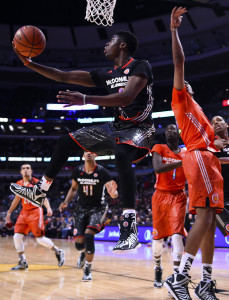
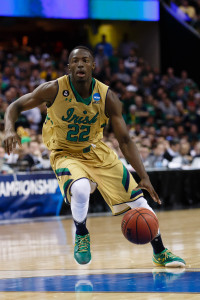
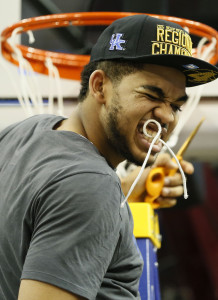
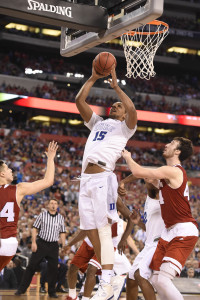
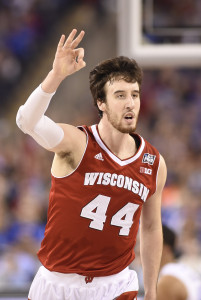
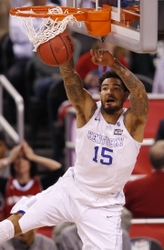
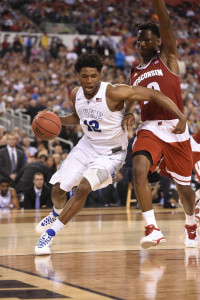
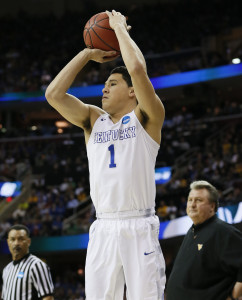 12th best prospect in this year’s class, while
12th best prospect in this year’s class, while